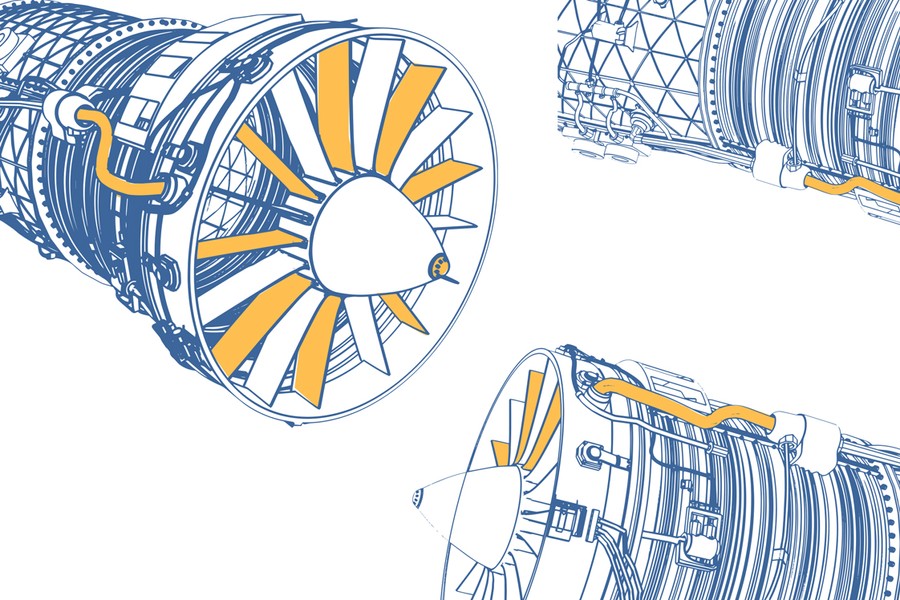Established in 2003, Melrose has historically operated a “buy, improve, sell” model where it bought underperforming manufacturing businesses, aiming to sell them later for a premium.
This strategy proved lucrative for investors, with Melrose delivering an average total return (share price + dividends) of 18.42% per year over the last 20 years versus the FTSE All-Share Index’s 7.54% p.a. over the same period.
Melrose has changed its stripes regularly over the past few decades but its most recent incarnation stems from the acquisition of GKN, completed in 2018. GKN was an industrial business operating in the aerospace, automotive and powder metallurgy industries. Melrose has since spun out the legacy GKN Automotive and Powder Metallurgy businesses (now listed on the London Stock Exchange as Dowlais Group), leaving the GKN Aerospace business under Melrose’s control.
As such, Melrose now considers itself a pure-play aerospace business. The business is split into two segments: Structures and Engines. The Structures business accounts for 64% of Melrose’s revenue, yet it accounts for only 26% of the segmental adjusted operating profit. The Structures business provides lightweight composite and metallic structures, electrical distribution systems and components to both commercial and defence aeroplane manufacturers such as Airbus and Boeing. The Engines business accounts for 36% of revenue but provides 74% of the segmental adjusted operating profit. The Engines business is engaged in the production of structural engineered components for aerospace engines. They are a supplier to engine makers such as Pratt & Whitney and GE Aerospace and provide parts for commercial engines such as those powering the A320 fleet, but also fighter jets such as the F-35.
Melrose has moved away from its historical playbook towards a model where it expects to retain ownership of the aerospace businesses for the long term, with limited near-term mergers and acquisitions activity expected. This decision is largely driven by the attractive stage that the Engines business is about to enter. Commercial aeroplane engines typically have a 20–30-year lifespan – and over this period the engine will need at least three services. This period once the plane comes off warranty is called the ‘aftermarket’. Melrose is in revenue and risk sharing partnerships (RRSPs) with the engine makers, where it contributes an agreed percentage of total annual programme costs and in return receives an agreed percentage of total annual programme revenue and profit. Melrose provides engine makers with non-rotating parts for their engines which tend to last for the lifespan of the engine. This means that its costs in the aftermarket phase are fairly minimal, but it is still entitled to a share of the revenue. This makes the aftermarket a very lucrative phase of the Engines business’s cycle. Melrose has these RRSPs in place on the two main legacy narrow-body engines, and so expects significant cash flow generation to stem from these agreements.
Melrose now considers itself a pure-play aerospace business.
These economic dynamics also provide a fairly high barrier to entry for competing industrial firms. The upfront investment required to design the parts which will go into the next generation of aeroplane engines is large and the revenue received is initially limited. It is only once the design is complete and these engines begin flying, that Melrose begins to recoup these costs. For firms that do not have another source of cash to fund this initially loss-making endeavour, this represents a significant hurdle. In addition, the nature of aerospace, especially post the Boeing 737 Max crashes, is that safety will be prioritised over cost and so Melrose’s reputation in engine part building would make displacing them difficult.
These lucrative agreements, in conjunction with high barriers to entry, give management confidence in their ability to collect significant cash from the Engines business. Management estimate a net present value of future expected cash flows from the Engines business of £5.5bn, which would represent 86% of the current market capitalisation.
However, whilst performance has so far exceeded management’s expectations, this is an industry prone to manufacturing issues and delays. The widely published supply issues in aerospace engines could lead to lower deliveries.
In addition, the Engines business’s success is dependent on the trajectory of commercial aerospace and flying hours specifically. Aerospace traffic levels, as measured by revenue passenger kilometres, have been recovering following the pandemic impact and in the narrowbody market are ahead of the levels seen pre-pandemic. Of late, there are signs this post-pandemic boom might be slowing, as evidenced by the rare profit warning issued by Ryanair recently, and any slowdown here would affect both of Melrose’s businesses. The outlook provided by management then, is not without execution and macroeconomic risk.




